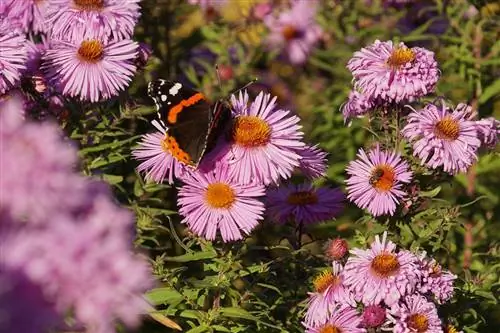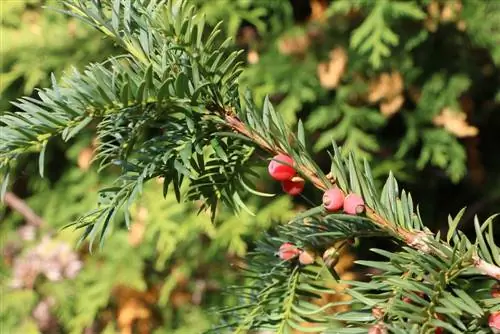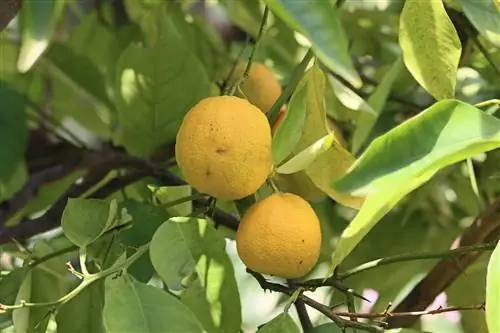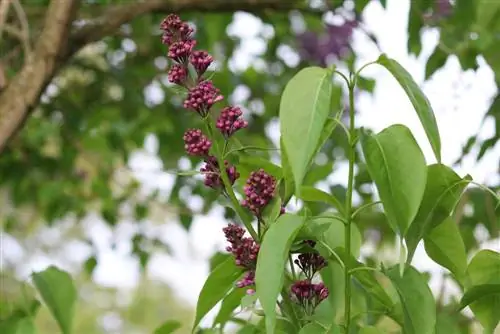- Author admin [email protected].
- Public 2023-12-17 03:39.
- Last modified 2025-01-24 12:45.
If you want to keep the flame tree in our latitudes, it is best to place it in a heated winter garden, as it cannot tolerate any frost temperatures. Temperatures below 5 degrees Celsius can cause serious damage to the flame tree. But it is also possible to keep it on the balcony or terrace in the summer months. However, the temperatures here should not drop too much at night. The flame tree enchants with its fiery red flowers.
Appearance
The flame tree is a deciduous tree in tropical regions. Its branches are alternate and have feathery leaves. Its flowers consist of 5 spatula-shaped petals that display an intense flame red. The bark is usually very smooth and has a brownish-gray color. The tree crown is widely spread out and mostly hemispherical. The special thing about the flame tree is its unique blossoms. It appears in the summer months and the flowering also depends on the location. It can appear in May/June, but also in July/August. The sight of the many small inflorescences is simply magnificent and spectacular. Nevertheless, the flame tree is still considered an exotic tree representative because it is not so easy to maintain it in this climate.
Location
The location is very important for a flame tree, as this tropical representative has different demands on its environment. On the one hand, it needs a bright location, although direct sunlight causes the flowers to fade quickly. The feathery leaves, on the other hand, are suitable for providing shade. When choosing a location, it should also be borne in mind that a flame tree can reach a height of between 3 and 10 meters. That's why height growth should be limited in good time when kept in the winter garden.
The flame tree can also be placed on a balcony or terrace in the summer months, although keeping it in a bucket obviously greatly limits the growth of the flame tree. Keeping it on the terrace is recommended as long as the nighttime temperature does not drop below 10 degrees Celsius. Like all tropical representatives, the flame tree reacts very sensitively to sudden drops in temperature.
cultivation
Any amateur gardener who would like to grow a flame tree from seeds is welcome to do so:
- The seeds of the flame tree are elongated and have a hard shell, so the seeds should be soaked in lukewarm water for at least 12 hours.
- It is then placed in potting soil to a depth of half a centimeter and covered with a little soil.
- The seeds germinate after around 14 days if the room temperature is constantly between 20 and 25 degrees Celsius.
- The substrate must be high-quality potting soil or coconut fiber
- This should be kept slightly moist throughout the entire germination period. However, there must be no moisture, which would harm the seedling.
- To ensure a constant temperature, the germination container can be covered with glass or transparent film.
- However, the hobby gardener must ventilate at least every other day and any condensation that forms should be removed.
- In the first 6 weeks, the seedling cannot tolerate direct sunlight.
- After two months, the seedlings can be transplanted and moved to other plant pots. The roots must not be damaged.
- The flame tree seedling must also be checked regularly for pests or diseases, which can also have a lasting impact on growth.
Care
The young plant should be in permeable and nutrient-rich soil. In order to limit the height growth and trim the flame tree to a dense growth, the flame tree should be trimmed and cut very early. During the growth phase, abundant watering is recommended. Regular fertilizer application in the months between May and October in a 3-week cycle is also beneficial. If the flame tree is in a pot on the terrace, it should be in the lee. However, the flame tree only begins to bloom after a few years. Fertilizing the flame tree is actually not necessary as it should not reach its full height. However, adding fertilizer during the flowering phase can potentially extend the duration of flowering.
Wintering
The flame tree is very susceptible to frost and also loses its leaves in autumn. If it is in a dark location, it will not sprout its leaves again until late spring next year. The winter location should have a temperature of at least 10 to 20 degrees Celsius. If the flame tree is regularly kept warm and has enough light, it will sprout new leaves again after a short time. If you, as a hobby gardener, have the opportunity to keep your flame tree reasonably warm and bright during winter rest, you will have more of your flame tree next year. A winter resting place that is too dark leads to a late onset of leaf and flower formation.
Care tips
- The flame tree needs a bright, rather sunny location
- it must be in nutrient-rich soil
- flowering begins between June and August
- The growth must be restricted by cutting or pruning
- The flame tree can reach more than 10 meters in height if it grows unhindered
- during hibernation it shouldn't be too dark
- Water requirements should be checked regularly
- loses its leaves in autumn
What you should know about the flame tree in brief
- The flame tree is an exotic ornamental tree and is planted pretty much everywhere in the tropics. It grows in gardens and parks there, but is also often seen as an avenue tree.
- It reaches an impressive size of up to 17 meters, which gives an avenue a good image.
- In addition, the flame tree has bipinnate leaves that are arranged alternately and look incredibly elegant.
- The bright red inflorescences are very contrasting to these leaves. Countless flowers stand together in large clusters and attract everyone's attention.
- The huge fruits of the flame tree are no less spectacular. These are up to 50 centimeters long pods, which are also very thick and contain many elongated, spotted seeds.
- By the way: The magnificent flame tree can be grown from a seed.
- The flame tree is extremely susceptible to frost and cannot be planted in the garden. It should be grown as a container plant either on a sheltered terrace or in a larger winter garden.






